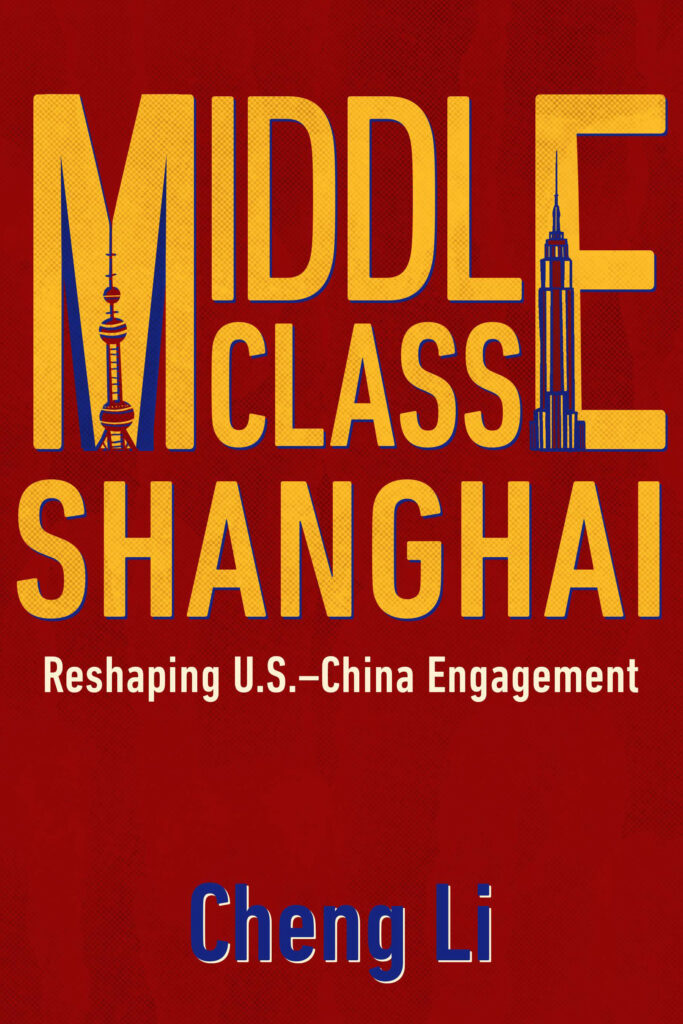
Review of Middle Class Shanghai: Reshaping US-China Engagement by Cheng Li. Brookings, 2021.
Cover after fictional cover of The Shanghairen, a recent collaborative art project styled after The New Yorker, captures what has long captivated the world about Shanghai. In its sophistication and self-assuredness, the breathtaking grandness of its skyline and the unexpected intimacy of its shikumen, Shanghai reigns as mainland China’s only true global city. A source of nostalgia and inspiration for many, Shanghai is also the focal point of the illusion, to which many Chinese and Westerners alike have professed belief, in both the city’s semi-colonial and reform eras, that Shanghai constitutes a vision of China’s future. Cheng Li, based at the Brookings Institution, continues this tradition in Middle Class Shanghai: Reshaping US-China Engagement, a thought-provoking, but ultimately unconvincing work.
“China today, as exemplified and led by Shanghai, is a crucible of political, socioeconomic, entrepreneurial, cultural, and civil society change,” Li writes. Contrary to nationalist caricatures, its middle class “holds open-minded, worldly views and values, a willingness to challenge central authority, demands for government accountability, and a strong desire to work with the United States.” Li argues that the West’s engagement has changed the Chinese even if it has not yet changed how China is governed. To decouple now would be to alienate the middle class just as it is poised to exercise greater influence, with domestic-oriented aspirations for China’s progress that may prove less threatening to the West than China’s apparent trajectory.
In its mix of history, anecdote, and data, Li often lapses into a tone of boosterism unbecoming of Shanghai’s stature, full of the “firsts” and “largests” that only occasionally represent meaningful accomplishment and are tangential to his thesis. (Some facts, such as Shanghai’s world-beating number of coffee and teahouses, are nonetheless telling manifestations of Shanghai’s spirit and latent civil society.) His surveys of Shanghai returnees – “presented to the public for the first time” – are dated (2009 and 2014) and poorly executed. More rigorous work, some of which Li cites, provides better confirmation of more liberal attitudes among China’s most educated and wealthy.
Despite Li’s analogy that the city is to China what New York is to the United States, the city is in many ways less influential. While Deng Xiaoping may have later regretted that Shanghai was not one of China’s first special economic zones, it is one of a series of consequential policy decisions that have clipped what might have otherwise been Shanghai’s further ascendance. Although it is an undisputed magnet for domestic, returning, and international talent, the hukou system and caps on further population growth mute its ability to consolidate its position. Its claim as a financial capital is challenged by Shenzhen and Hong Kong while Beijing ensures the capital’s cultural predominance. Shanghai’s political power, apart from the Jiang Zemin and Zhu Rongji era, has often been constrained by wary suspicion and resentment as the city’s resources were funneled to further the rest of the country’s development throughout most of the CCP’s rule.
Li’s overemphasis on Shanghai’s political economy detracts from getting to know the city’s people and whether they truly are at the vanguard of social change in China or its exception. Surely, a significant share of Shanghai’s relatively liberal attitudes are a consequence of prosperity that Chinese elsewhere are likely to adopt as they become richer and globally engaged. But Li likely underestimates how much of the city’s prosperity is a consequence of a commercial culture that may be less transferable. Just as America’s sociopolitical future is being shaped more by places like Ohio than New York, China too has more representative provinces deserving of more attention.
Li’s optimism will be for nought if China’s growth slows and thwarts the ascendance of a broad-based middle class. If that happens, it will be a shame, because there is the potential for reform-inducing cleavage between China’s middle class and the CCP. Recent actions targeted at the technology, entertainment, and education sectors threaten to unsettle not just billionaire wealth tables, but the confidence of scores of the country’s most productive citizens who are undoubtedly asking whether their wealth or world-changing ideas might find a better home elsewhere. In ransacking the private education industry, but not addressing the more fundamental issues of educational inequality or the marginal economic prospects that await even college graduates, the Party reveals more about its weakness than its power. Too many of China’s people have grown too sophisticated to accept the insertion of Xi Jinping Thought in the country’s primary schools without disdain. And more than enough, upon hearing the new calls for “common prosperity,” will think like Vaclav Havel, whom Li quotes as observing that, “standardized life creates standardized citizens with no wills of their own,” and shudder at the loss of choice in their private lives.
A party that masterfully co-opted the economically ascendant under Deng and Jiang now risks alienating them. But it will be difficult for the West to actively exploit the CCP’s most self-destructive tendencies, other than to remain as open as it can to China’s people and nuanced in both its rhetoric and approach. In depriving China of the best of its talent, the CCP of its monopoly on thought and its focus on delivering a government worthy of its middle class, the West may yet outcompete China. Until then, Shanghai is more likely to remain an enclave apart and, like Hong Kong, at risk of becoming more like the rest of China than China is to become like it.